|
|
|
| |
ATM - Azienda Trasporti Milanesi
Page 1: Overview
All images link to larger
copies which will open in a new window/tab
This page is under construction!
|
|
|
This page gives an overview of tram designs which
have run in Milan/Milano.
More detailed pages on recent tram designs are linked below.
Founded in 1931, Azienda Trasporti Milanesi is a
Public Limited Company owned by the Milan Municipality which
manages public transport in the Lombard capital and in 46
provincial towns, serving an area with a population of 2.4
million people. It operates 18 tram lines, run with Peter Witt
streetcars from the 1920s, Stanga trams from the 1950s and more
modern classes. There are also 72 urban Bus lines, 4 Trolleybus
lines, 35 interurban Bus lines, 4 Metro lines (Metropolitana di
Milano) and one surviving interurban tramway, carrying over 734
million passengers in 2010.
|
|
|
|
|
|
| |
|
|
Official Milan ATM website:-
http://www.atm.it/
The Development of the Modern Tram by Brian Patton (Adam Gordon
2006):-
|
|
|
|
|
ATM - Azienda Trasporti Milanesi
All images link to larger
copies which will open in a new window/tab
Peter Witt/Ventotto Trams - Built 1928-1930
In the 1920s, the increasing traffic on the Milan
urban tramway network made pressing the substitution of the old tramcars
″type Edison″. The municipal tram office decided to project a new type of
tramcars, built on two bogies, taking as model the Peter Witt streetcars
built in Cleveland and in other cities of the United States.
The Milan streetcar was projected by the municipal engineers in 1927, and
two prototypes, built by Carminati & Toselli and numbered 1501 and 1502,
came into service at the end of the same year.
After a few tests, the construction of a 500 units stock (numbered 1503 to
2002) began, divided between several manufacturers:-
1503 to 1612 - Società Italiana Carminati & Toselli
built 110 units
1613 to 1722 - Società Italiana Ernesto Breda built
110 units
1723 to 1772 - Officine Meccaniche di Reggio Emilia built 50 unit
1773 to 1882 - Officine Meccaniche built 110 units
1883 to 1992 - Officine Elettroferroviarie Tallero built 110 units
1993 to 2002 - Officine Meccaniche Lodigiane built 10 units
The electrical equipment was built by Ansaldo and
TIBB, the bogies by Fiat under Commonwealth-license.
The cars were delivered in 1929–1930 and immediately
put into service. The Peter Witt system involved entrance at the front with
a conductor sat just ahead of central exit doors. They could take 33 seated
passengers and 125 in total. Seats were longitudinal in the forward section
and transverse behind the exit. In 1932–1935 some cars were equipped with an
experimental half door at the tail, and from 1938 to 1940 with full-sized doors.
The rear transverse seating was changed to longitudinal to assist flow to
the rear exit. The Peter Witt system was therefore abandoned after a few years of service.
The trams were known locally as 'Ventottos' ('twenty-eights' after their
year of introduction).
During the Second World War many cars were seriously
damaged, but only one unit had to be demolished, the others being repaired
or reconstructed from 1945 to 1949.
From 1970 on, the traditional green livery
(introduced in 1930) was abandoned, and a new orange one introduced; from
1972 the traditional trolley pole was substituted by a pantograph. Since
1976 some cars were put aside and later demolished. Nowadays circa 100 units
are still in service, repainted in the last years in a white and yellow
livery already used on the prototypes. (ref: The Development of the Modern
Tram by Brian Patton & Wikipedia)
A selection of Ventotto/Peter Witt tram images
Photos: ©2015 Ian Boyle
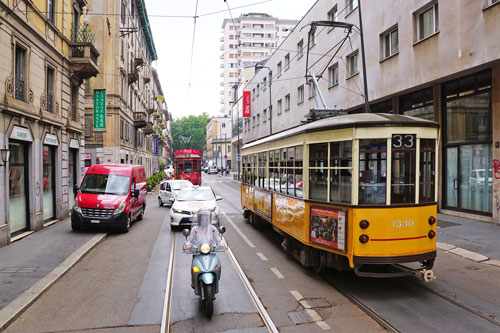
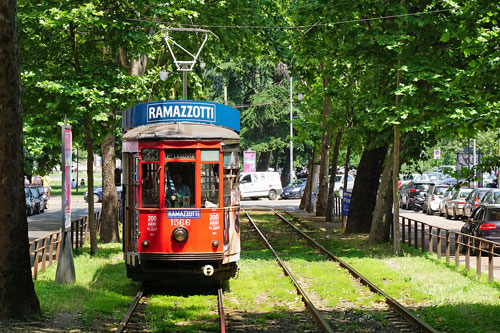

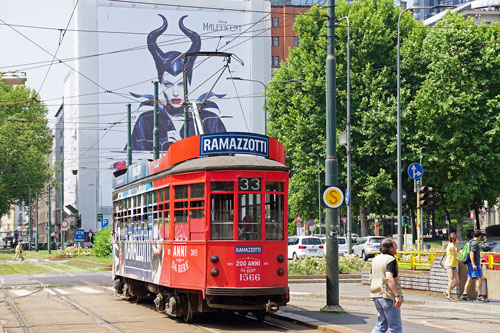


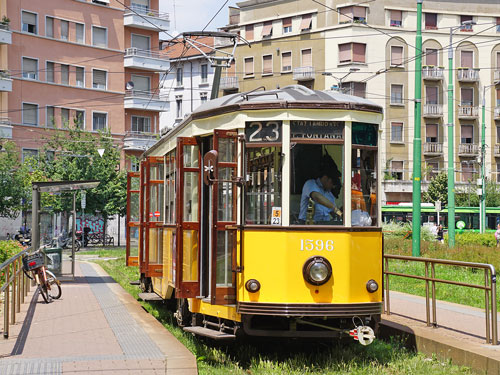
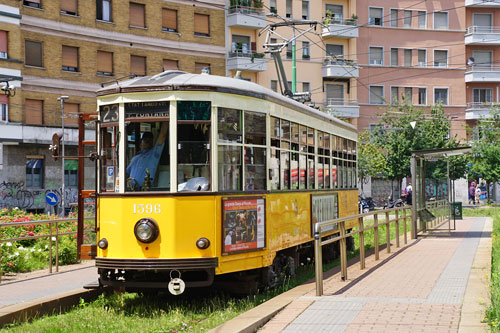
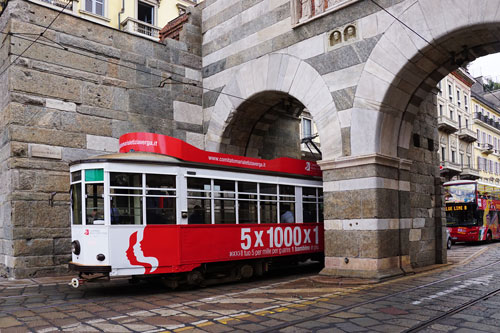
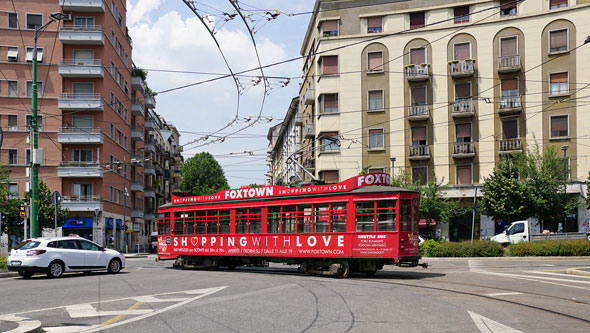
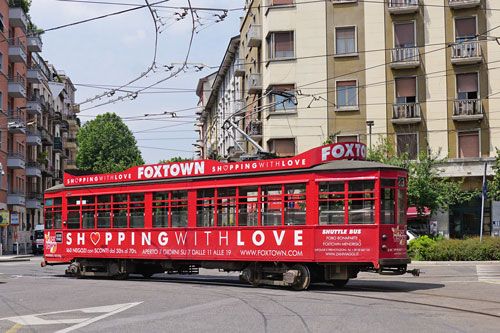

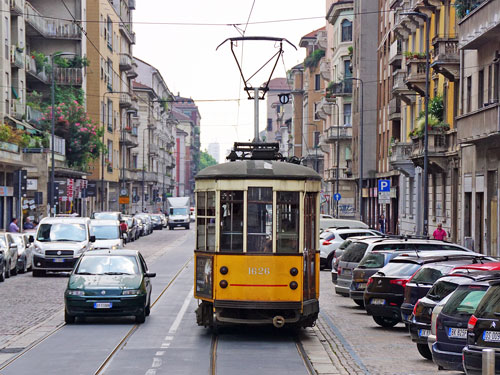
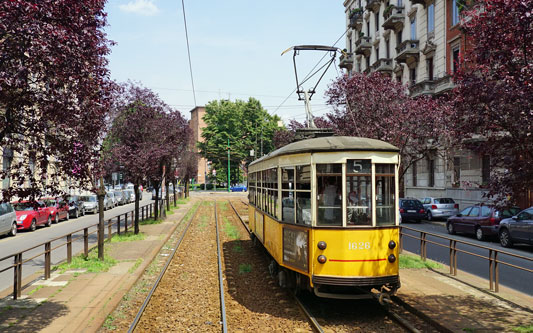
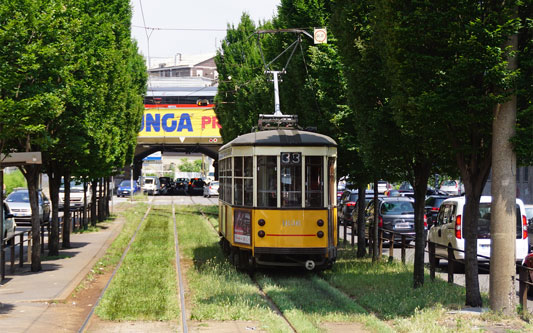
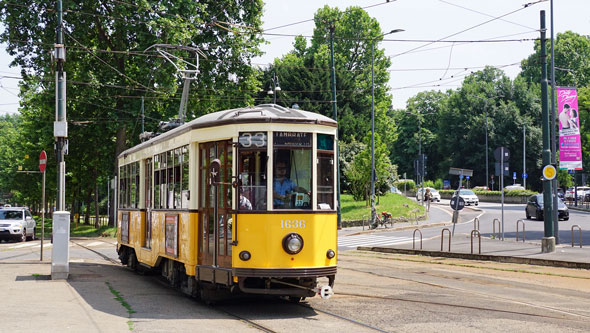
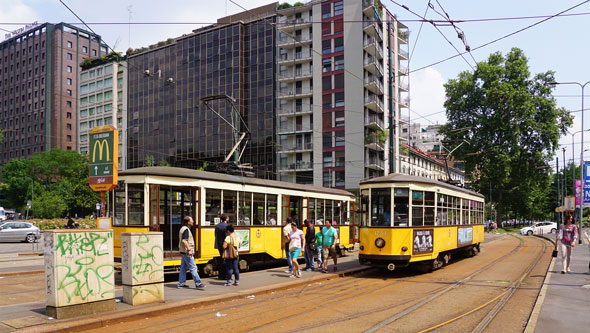
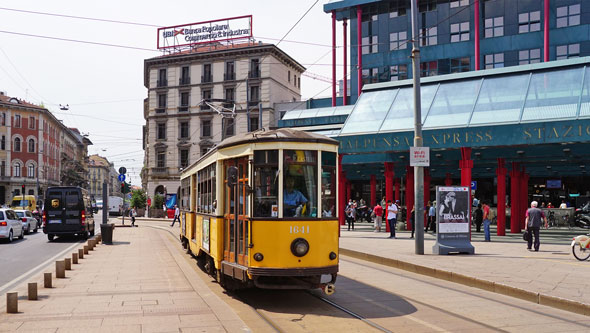
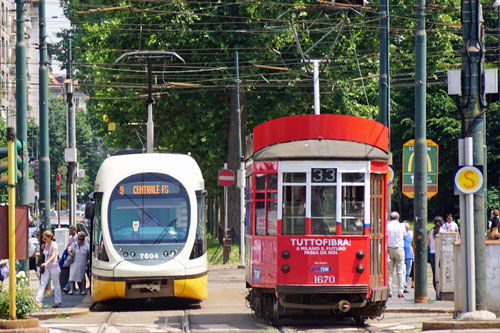
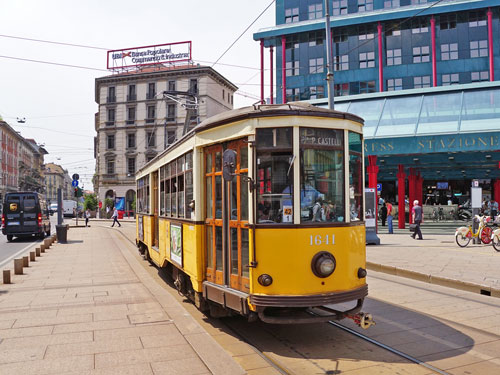

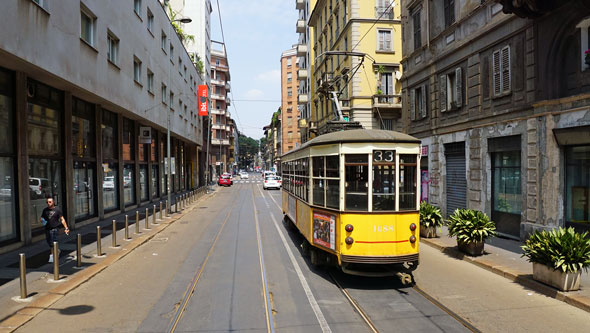
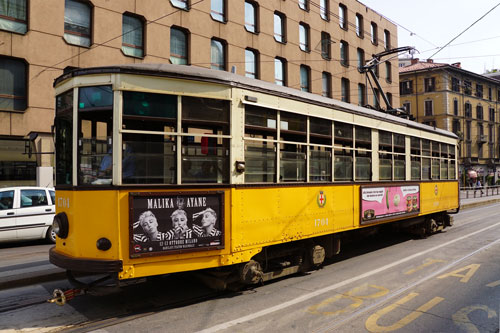
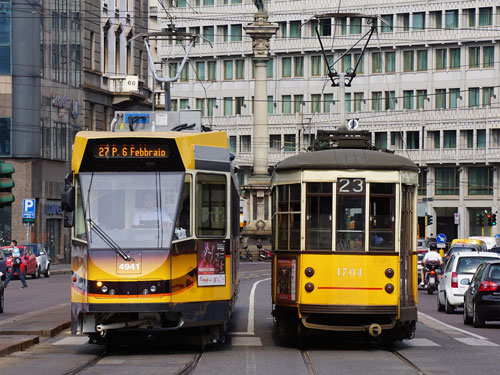
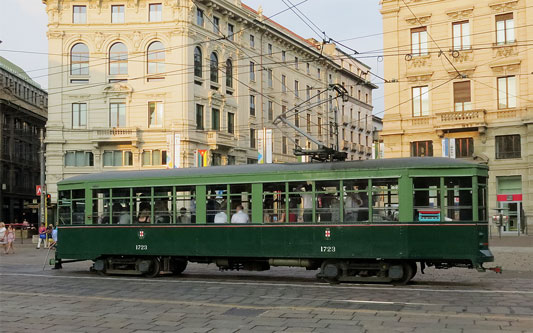

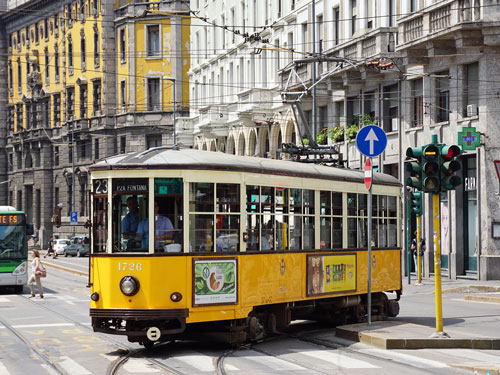
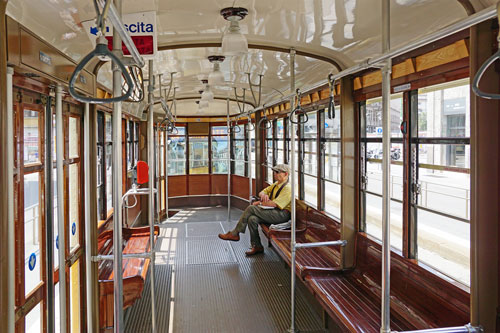
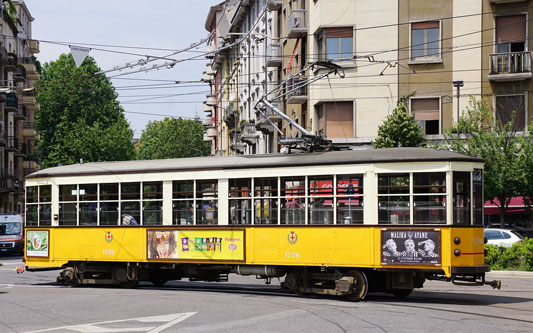
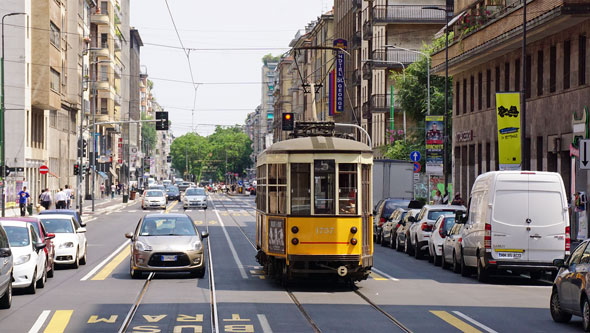
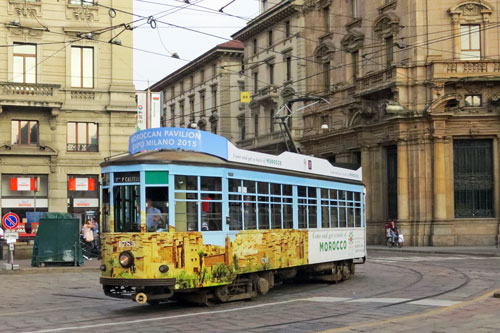
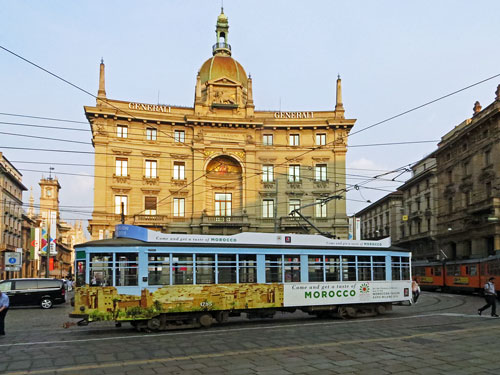
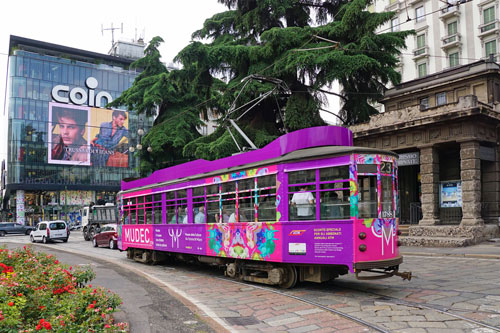
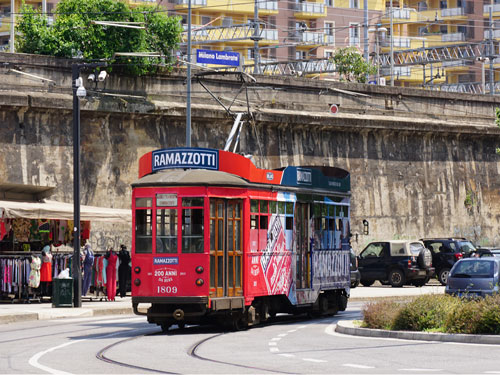
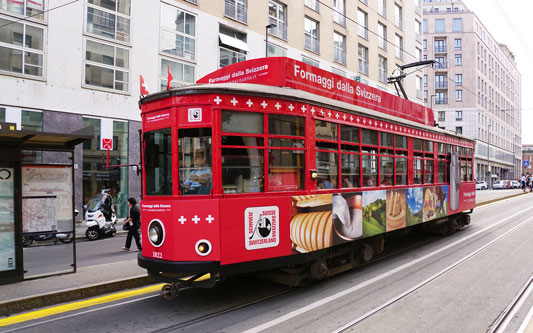

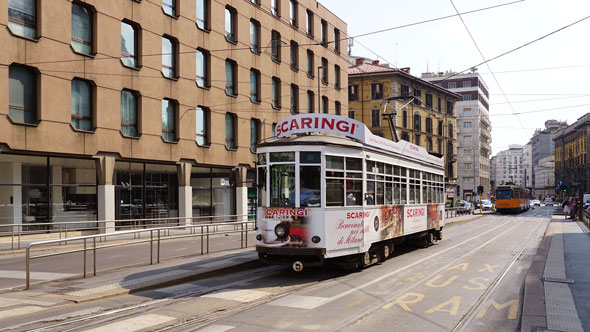
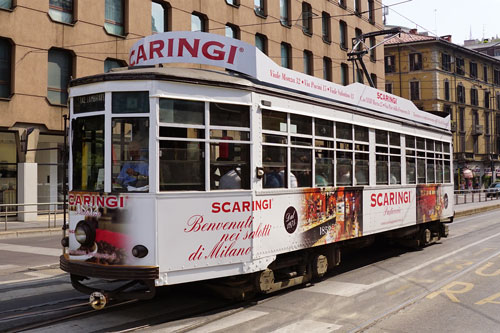
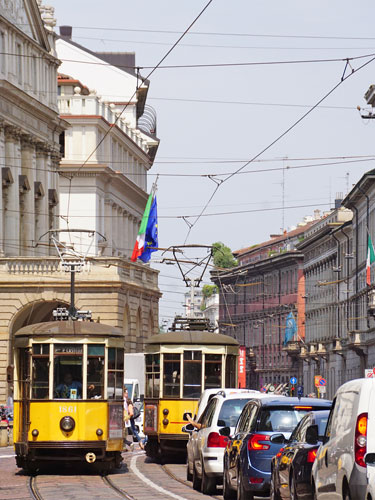
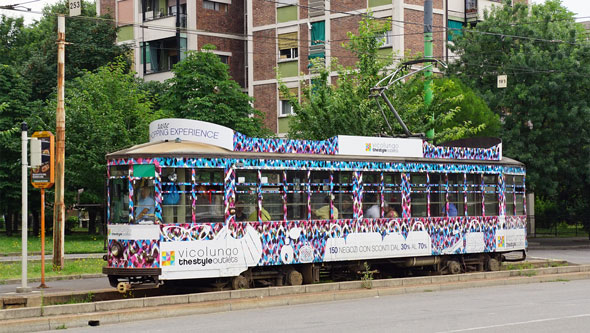
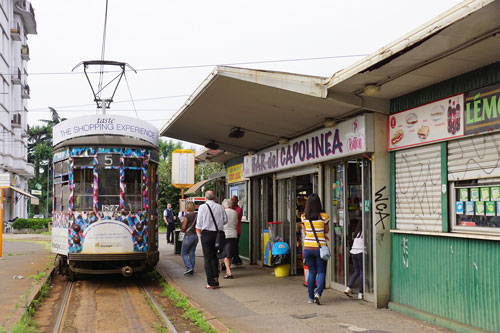
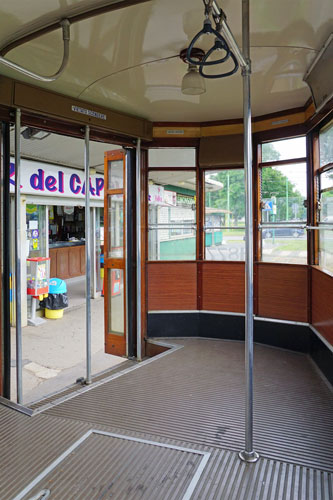
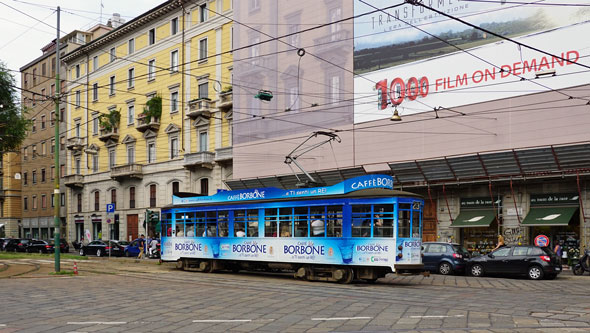
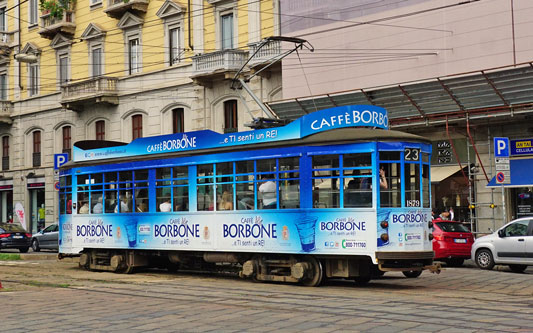
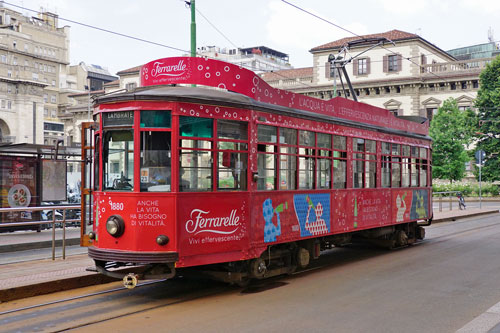
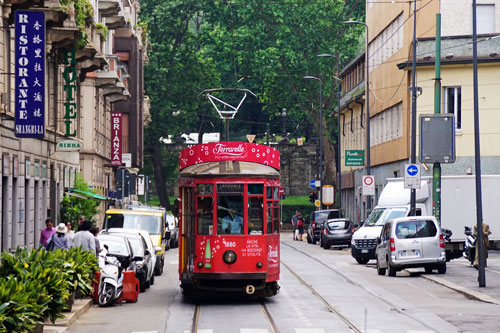
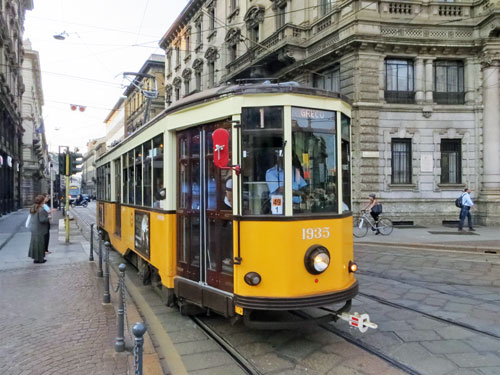
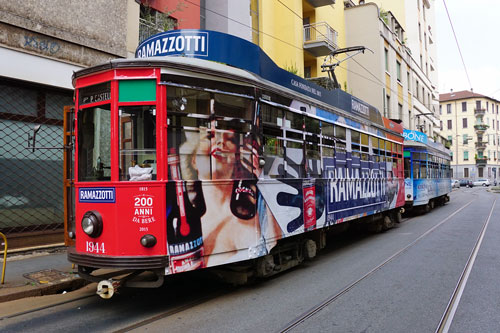
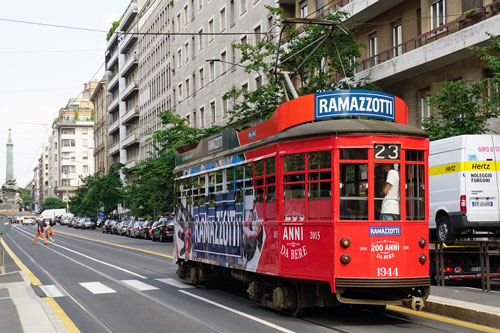
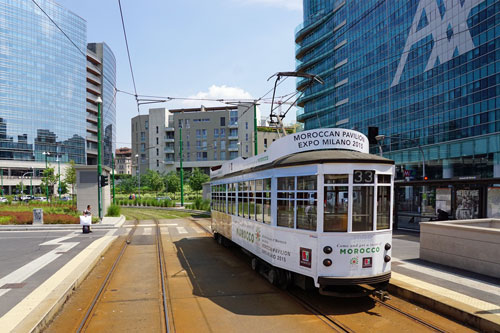
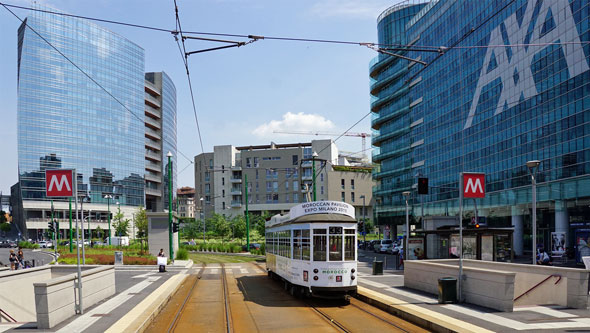
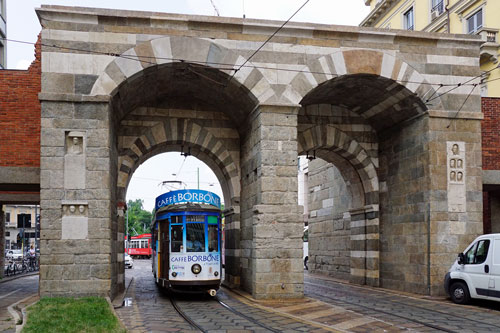
4600/4700 Series (Stanga/TIBB) - Built 1928-1930
The 4600/4700 series trams were projected in the 1950s as an articulated
version of the series 5300. Originally a fleet of 15 cars (to be numbered
from 4601 to 4615) was foreseen, but the two last units were delivered in an
experimental 'all electric' version, and because of that they were numbered
in the 4700 series. Some years later a second stock of 'all electric' cars
was built, numbered from 4716 to 4733.
A selection of Stanga images on route 2
Photos: ©2015 Ian Boyle
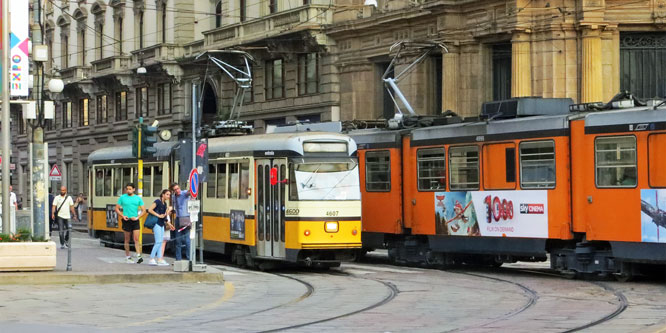
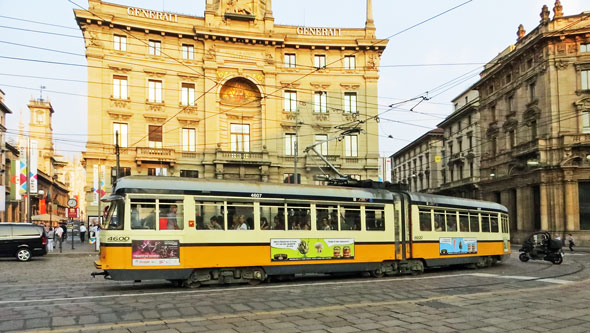
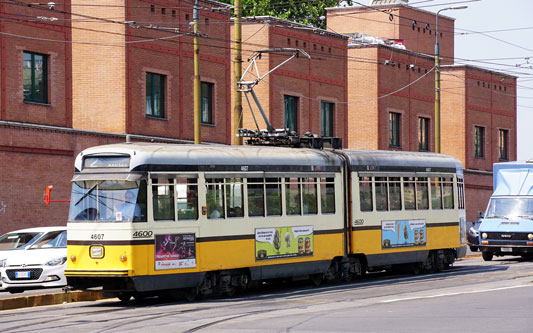
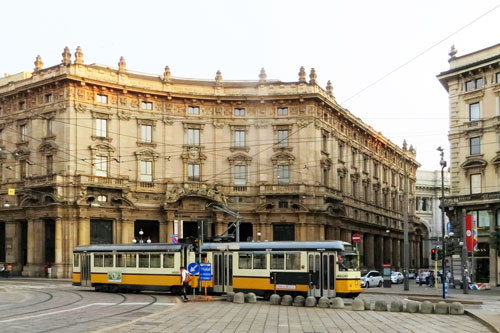
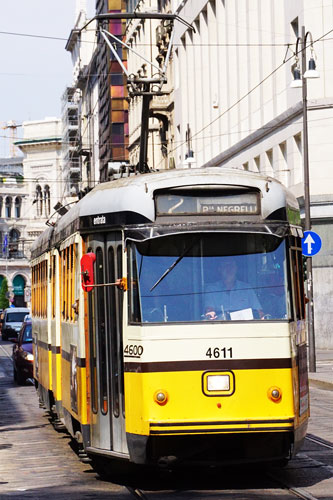
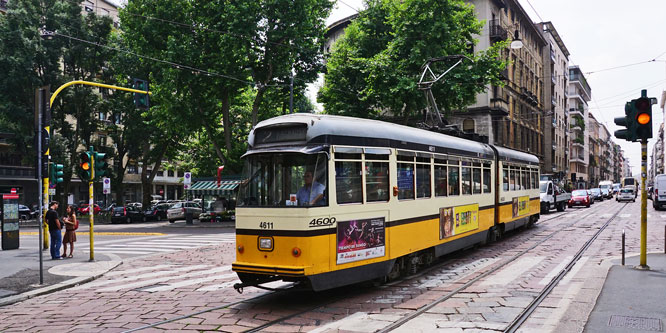
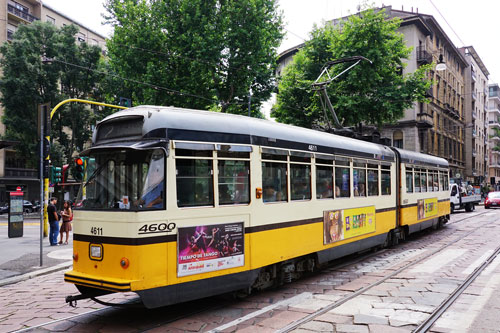
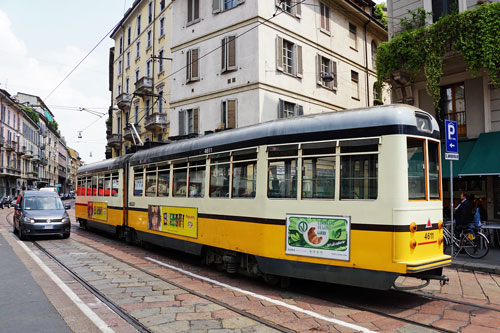
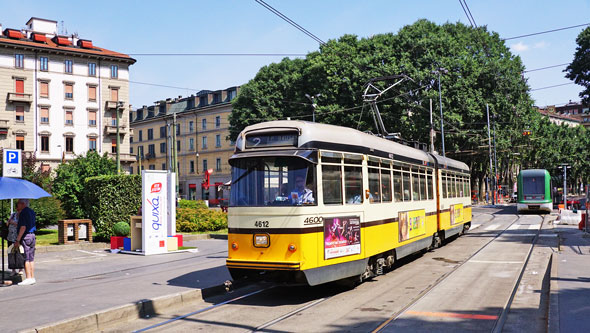
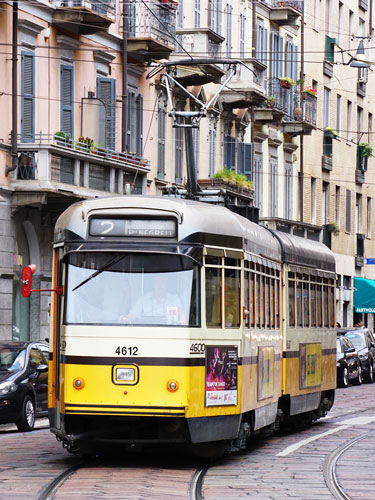
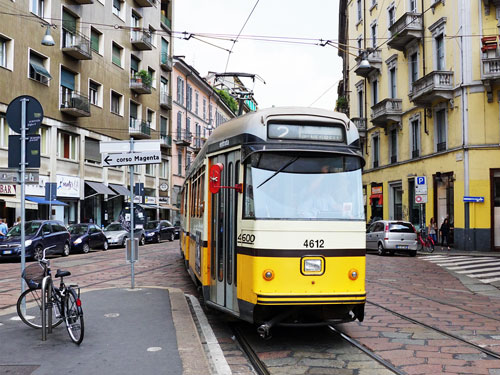
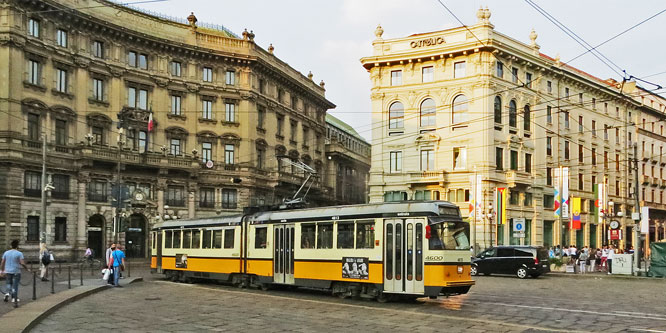
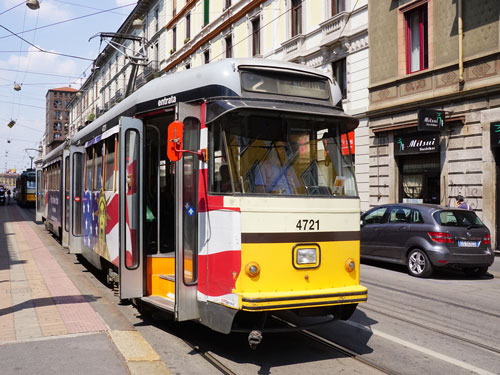
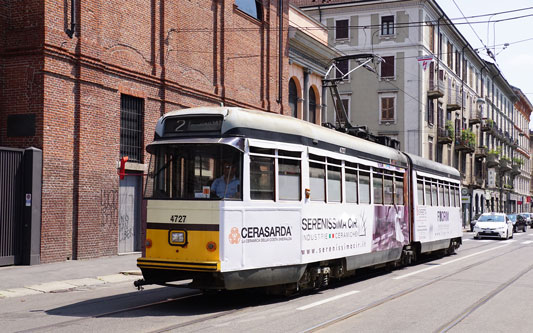
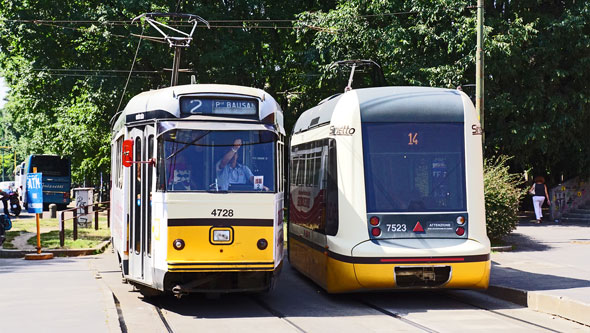
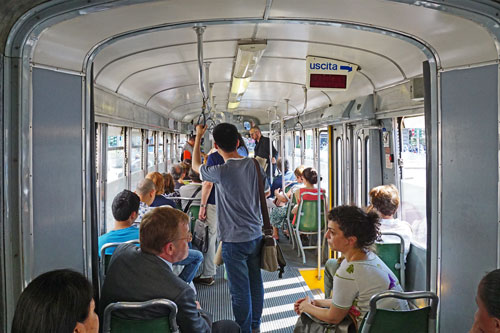
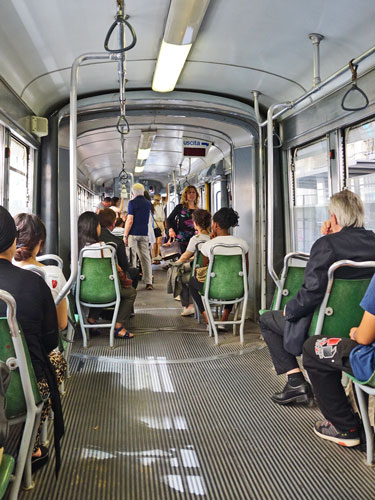
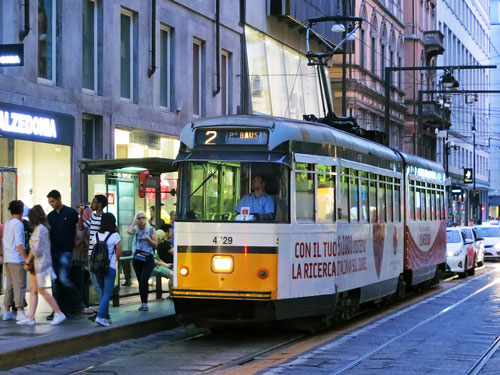
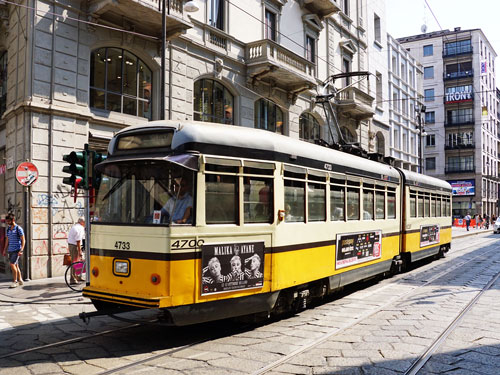
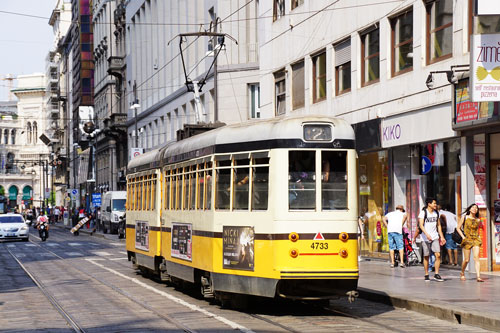
4900 Series 'Jumbo' Articulated Trams - Built 1976-1978
The 4900 series 'Jumbo' trams were built in the 1970s by Fiat Ferroviaria
(4900-4949) and Stanga 4950-4999, respectively, and were intended to be used
on future light rail lines, such as the proposed circular line that should
substitute the existing circular trolleybus line. However such lines were
never built, and the 4900 were used on the existing network. The trams have
an offset cab for clearance reasons. Some of the Jumbo trams have been
rebuilt in more modern style.
A selection of 'Jumbo' images on various routes
Photos: ©2015 Ian Boyle
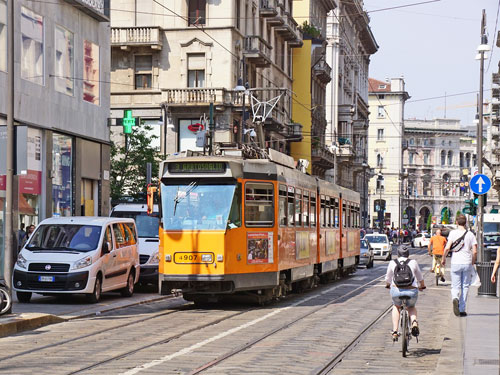
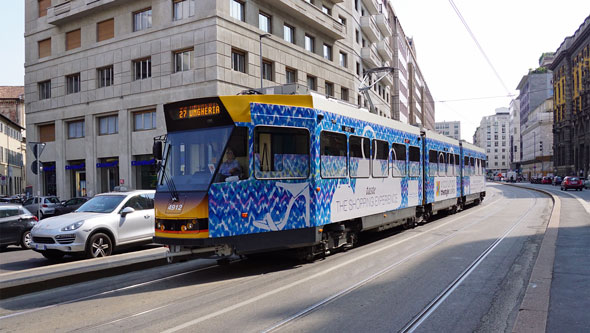
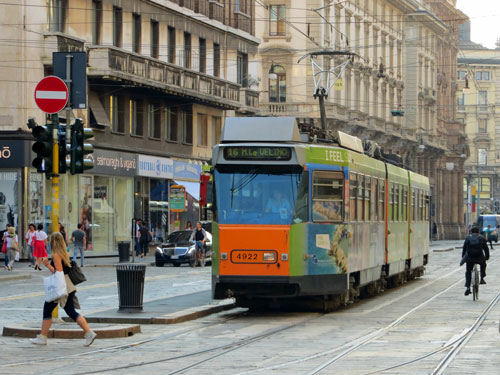
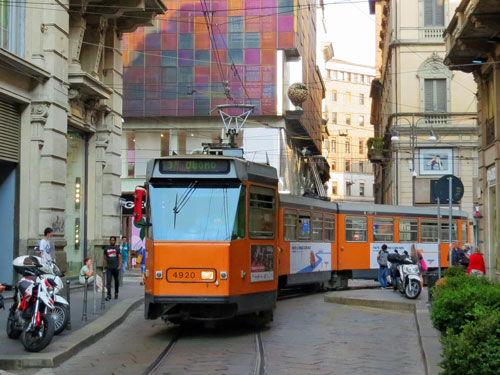
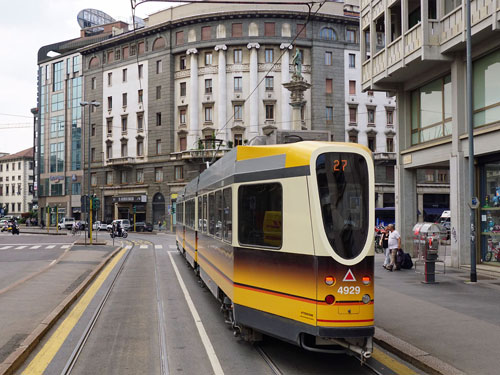
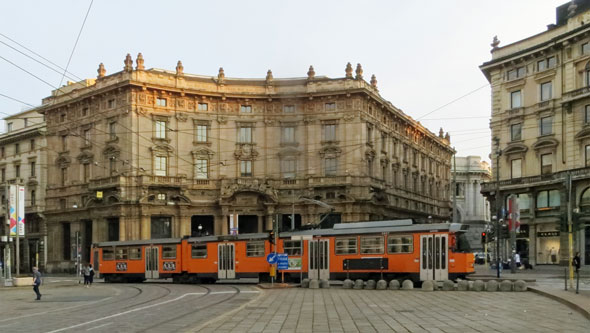
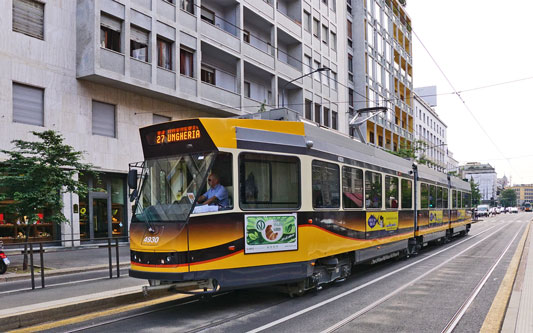
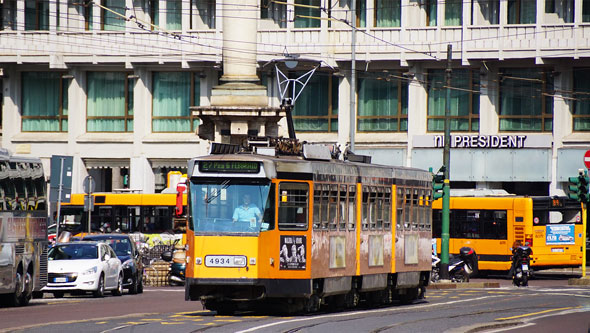
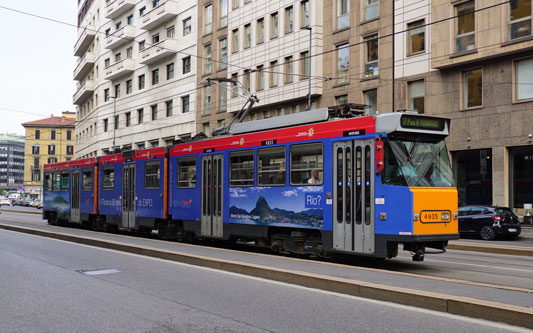
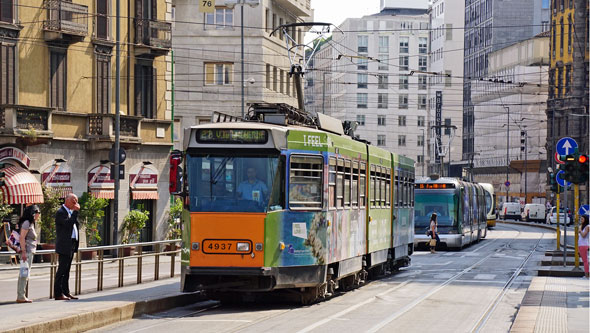
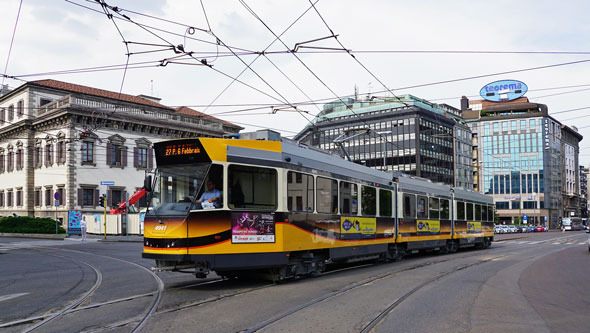
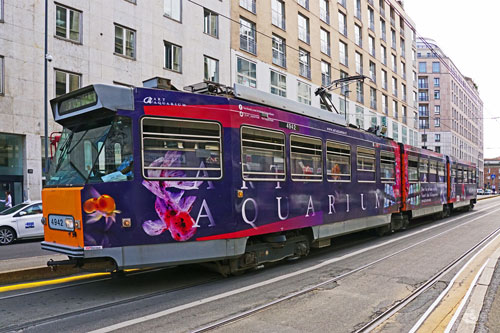
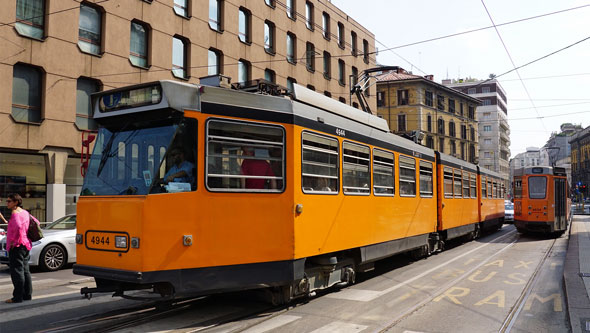
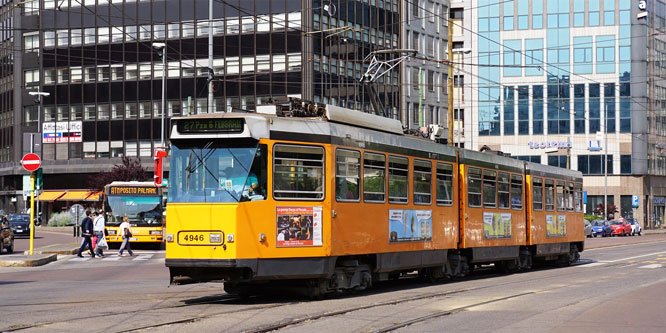
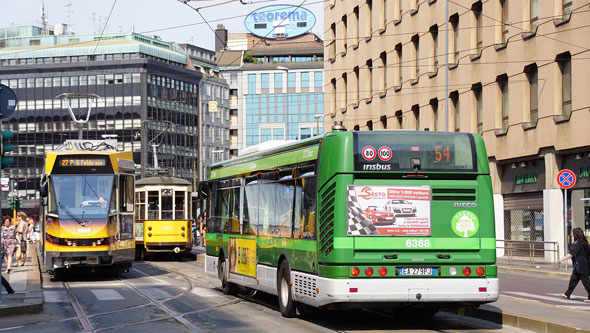
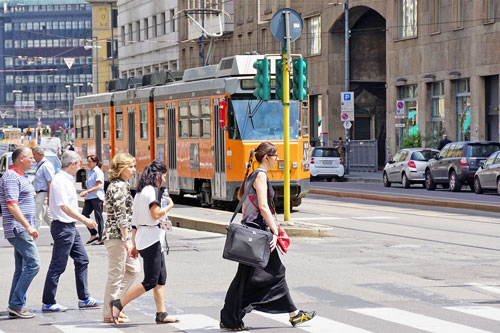
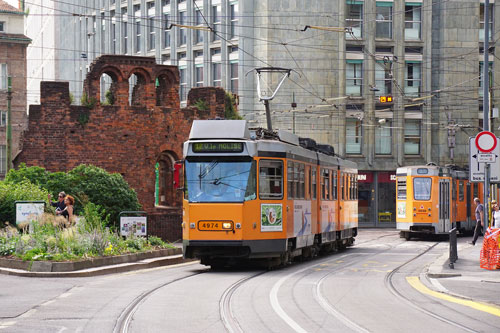
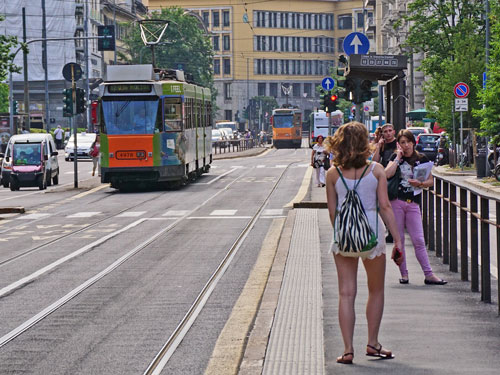
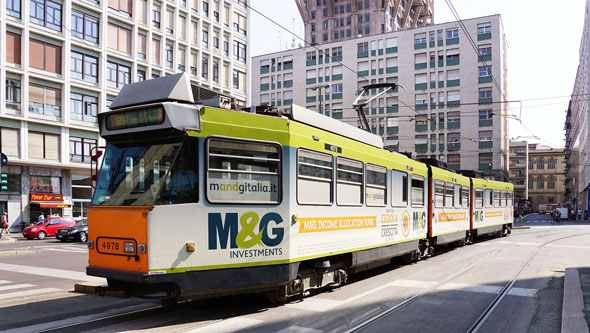
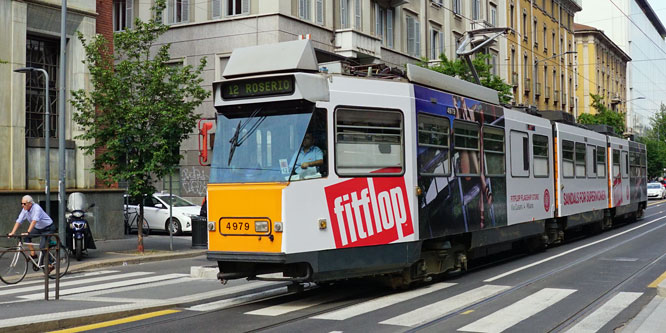
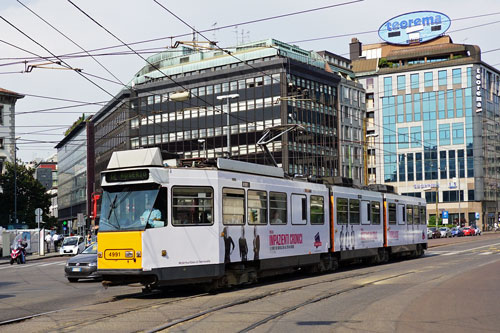
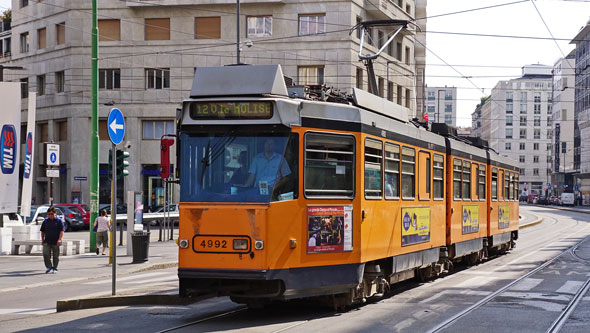
Milan Interurban Tram Routes - 2015
to be added